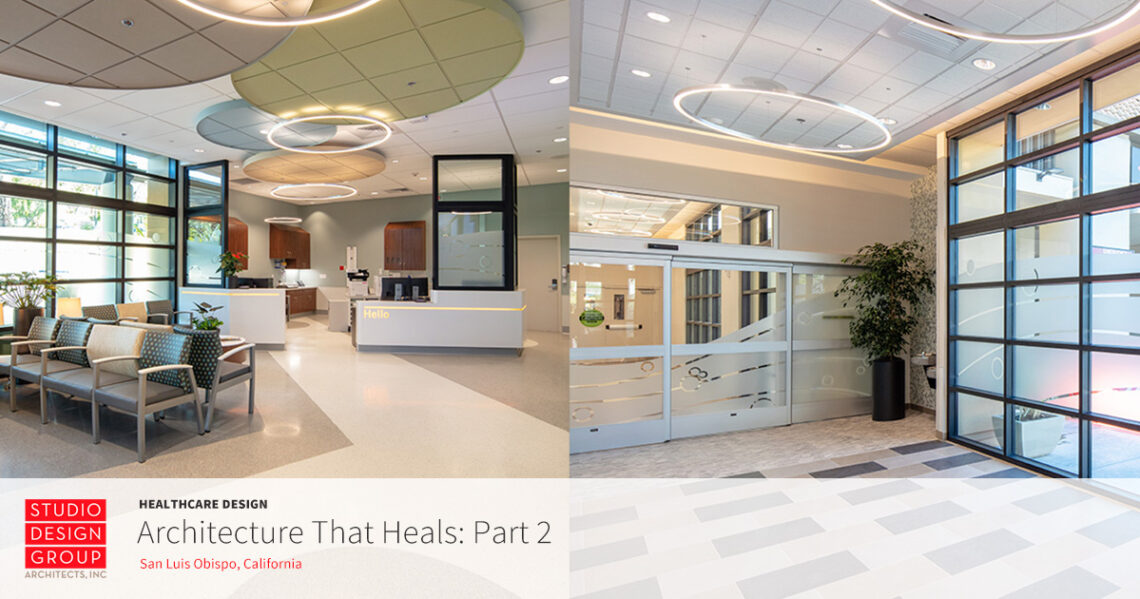
Emerging Healthcare Trends 2020
In our previous blog, we considered innovations that we may see in our public spaces as a result of the recent global COVID-19 pandemic, ways in which we may be able to proactively slow the spread of highly transmittable diseases.
This post will focus on healthcare settings, including long term care facilities, and how they may adapt existing infrastructure to support new public health design needs.
Handwashing Stations
Handwashing and social distancing have become the new key buzz words popping up in every article and conversation. However, in the healthcare world, both concepts have been integral to healthcare design for centuries. Handwashing stations are already required inpatient rooms, at every nurse station, at medication and nutrition preparation areas, as well as in utility rooms where clean and soiled equipment are handled.
However, we may see handwashing requirements increase as a result of this pandemic. For example, building code officials and licensing agencies may consider requiring public handwashing stations at the entrance to every waiting room. Visitors may be required to wash their hands before entering sensitive areas such as the ICU or Maternity wing the way it’s currently required for entering a NICU.
Physical Distancing in a Hospital Setting
Physical distancing is an ideal measure for limiting the spread of disease from one person to another; however, it’s intrinsically difficult to achieve in a healthcare environment where the very purpose of the space is to support intimate, hands-on diagnostics of patients in a short amount of time. How can we care for patients while also protecting healthcare workers and first responders?
Some obvious steps include providing more space between chairs in waiting rooms and also limiting the amount of time patients linger in common areas. The following are some new emerging ideas at the forefront of design.
Personal Protective Booths (PPBs)
An innovative invention currently under development is the use of isolation screening booths on the exterior of the hospital to test and assess patients while maintaining a clean environment. Several examples here and here are based on booths that were successfully deployed in South Korea. It is essentially a transparent acrylic telephone booth with rubber gauntlet gloves embedded in a clear screen.
A patient can step into the booth and the medical professional can safely assess vitals and take a nasal swab without being in direct contact with the patient. The booth is sanitized as the medical professional assesses another patient in a different isolation booth. Since the medical professional is completely isolated from each patient, there’s no cross-contamination. The booths conveniently fold for long term storage, allowing for flexibility during times of need.
Personal Protective Equipment (PPEs)
With nationwide shortages of disposable PPEs such as N95 masks, sterile surgical gloves, gowns, and face shields, there is a growing need for innovations of in-person care isolation equipment. One example is the increased need for intubation shields, which is a mini protective booth for a patient who is incapacitated in some manner. The clear box reduces contamination to individuals and surfaces in the room by isolating the aerosol particles within the box that is located around the patient’s head. Some versions of intubation shields offer the bonus option for negative pressure ventilation to better capture the contaminated particles.
Another option to consider is providing patient management areas or booths within patient rooms where clinical staff can tend to pumps, monitors, and alarms connected to the patient without having to come into close proximity to the patient each time. This could help conserve disposable PPE, as well as the time spent to don and remove PPE.
Yet one more example is the concept of a ventilated patient headboard. This clever idea not only increases the protection of staff, but it can also “significantly reduce the amount of time required to purge the room of potential contaminants within the air”. This subsequently allows for quicker turnover to perform terminal cleaning in preparation for the next patient.
Telemedicine
We are beginning to see a rise in telemedicine as routine doctor appointments have begun to move into the realm of video calls to abide by stay at home orders throughout the country. We could also see this translate into the need for strengthening a hospital’s digital infrastructure to support virtual screenings as well as potentially taking vitals remotely via robotics. This physical separation between non-emergent patient and physician helps limit the potential for communicable diseases to spread to essential healthcare workers.
Virtual Connection
With social distancing comes social disconnection. To help support patients’ well being and recovery, we will see an increased need for virtual gatherings for patient visits by physicians and families alike. Hospitals may consider offering family visits via virtual conference booths for live video interactions while a patient is physically isolated. We will also likely see the increase in apps such as this NICU app designed to help keep parents connected to their new baby when physical contact is limited. Virtual reality can also be used to help soothe patients who may be suffering from pain or anxiety from isolation.
Single Occupant Rooms
While patients most often prefer single occupancy, it is not always feasible. However, we will likely see single occupant rooms become the norm for new construction since physical isolation is so important during contagious epidemics.
Clinical Staff Zones
We may rethink how clinicians enter and exit hospitals as well. A separate staff entrance could allow for the screening of employees prior to entering the building. Hospitals may provide staff isolation zones and decontamination areas before exiting the hospital (ie. staff showers, restrooms, soiled linen, etc) as well as provide a separate exit to help prevent cross contamination of clinical staff entering the building.
Automated Cleaning and Sterilizing
Imagine if an entire patient room could be sterilized by automated systems located within the walls. UV sterilizing lights could be embedded in the ceiling and operated when the room is vacant. Automation for sterilization activities could help better protect essential workers so they are less likely to be exposed to contaminated surfaces and linens. Automation could also shorten the time needed to clean a room between patient admissions.
Antimicrobial Finishes
It’s likely that finish coatings providing protection against a broad range of bacteria and microbes will become more widely used, especially on commonly shared hard surfaces such as countertops, door pulls, push bars, and protection plates.
Mechanical Air Handling Advancements
It will be interesting to see how the mechanical code evolves for healthcare settings considering hospitals are already held to pretty high standards.
Hospitals may consider applying strategies typically reserved for surgical units and isolation rooms on a system wide scale. Creating mechanical segregation of zones could allow for flexibility of patient wings to handle influxes of patients with communicable diseases during times of epidemics. This could allow existing hospitals to respond quickly and without immediate need for off site alternative care facilities. The ability to bring rooms online as temporary isolation rooms or units could help protect patients and staff alike.
There will likely be advances in engineered disinfection of air via filtration systems beyond the current MERV and HEPA filters. We may see further explorations of UV radiation recirculation units for purifying recirculating air.
Long Term Care Facilities
As quoted by Ai-Jen Poo, director of the National Domestic Workers Alliance and Caring Across Generations, “Coronavirus has put a particular national spotlight on unmet needs of the growing older population in our country, and the tens of millions of overstretched family and professional caregivers they rely on.” (Source)
Many Americans live in long term care facilities, whether it be a retirement community, an assisted living residence, or a skilled nursing facility. The living environments are often high density to promote social connections while also sharing caregiver responsibilities. Sadly, some long term care facilities have been the hardest hit by this recent pandemic.
Many of the innovations discussed above will likely blend into long term residential environments. There will likely be an increase in handwashing and hand sanitizing fixtures at the entrances to residences. Dining rooms may become less communal and move towards more semi-private dining nooks. Visitor and employee screening stations near the entrance of the building can help check on the well being of those who enter the facility. Antimicrobial surfaces could help greatly reduce transmissions in these residential environments.
The need for social distancing to protect residents from the spread of contagious pathogens will need to be balanced with the need for connection to support mental well being during social isolation. Clear visiting booths could allow families to visit their loved ones without physically being in the same room. Virtual video calls could allow residents to visit physicians, loved ones, and each other.
As time unfolds we will see which measures are implemented in the future and how our physical environment adapts to this new normal. These types of ideas may be the innovative solutions we need to create safer communities and so we can all continue to work, play, and connect.
